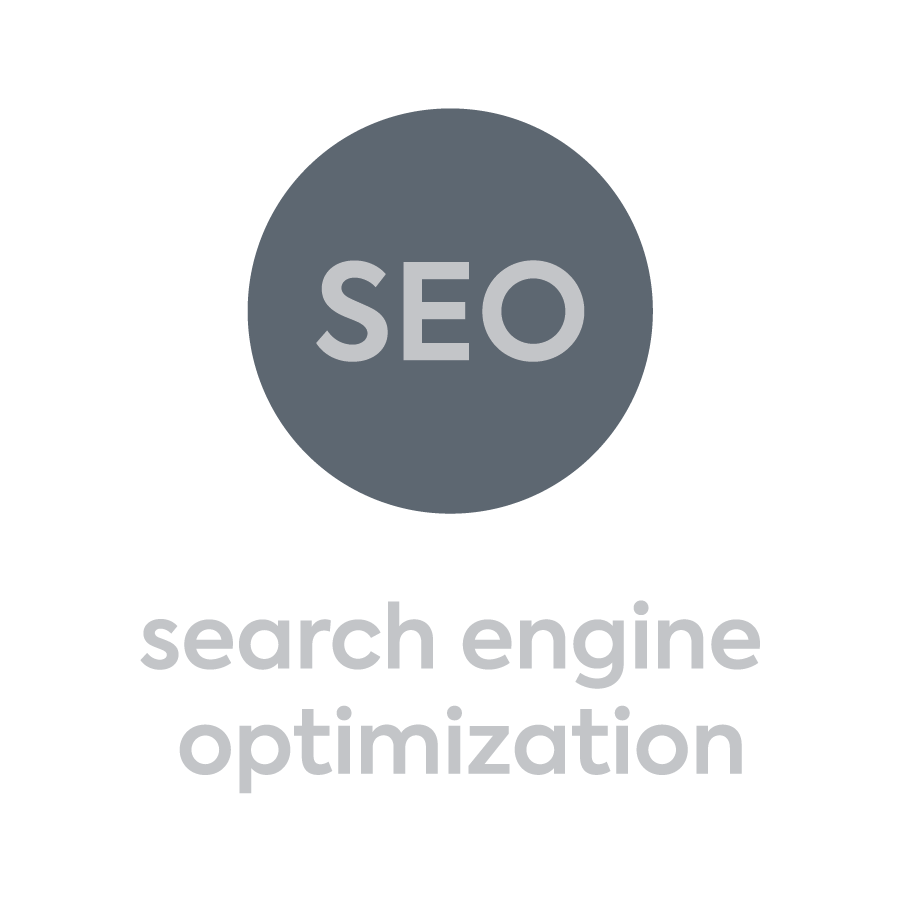top 10 apartment seo questions

Getting featured on the first page of search results is a game changer, instantly gaining exposure from targeted searches and driving large amounts of organic traffic to your site. However, even for those with a basic understanding of SEO, the process of launching new SEO efforts is daunting, and with so many questions that cloud the water, it’s hard to find clarity on a strong starting point.
But it doesn’t have to be. Here are the answers to 10 popular SEO questions that will provide apartment marketers a clear understanding of SEO best practices.
question 1: why is SEO important to a multifamily digital marketing strategy?
Search engine optimization is a marketing campaign aimed specifically at increasing the visibility of a website within search engine result pages. As visibility increases, the website receives more traffic which in turn leads to an increase in leads and revenue.
The actual optimization happens both on the website and on 3rd party sites that typically will link back to your site. Search engines, like Google, review over 200 factors in its algorithm to determine what it feels are the most appropriate websites for any given search.
SEO is a long-term marketing approach, which relies heavily on quality content, and constant updates and maintenance to the website.
Investing in your search equity allows you to reduce spends in other marketing areas, like paid listings on ILSs, as you increase visibility and become more competitive with other properties.
question 2: which ranking signals does google take into consideration?
Google takes many factors into consideration when ranking a webpage for a specific search phrase. For each factor, there are subfactors that make up the overall Google algorithm. The top 4 factors are:
- Content: High quality, unique, and relevant content is a must. Google uses the content on the website to determine what the site is about, its focus, and what it might be relevant for.
- Links: Google looks at links as votes for your site. The more you have from high quality, relevant sites, the more popular your site will be and the higher the ranking. Google also likes to see you listed in local directories that help reinforce your name, address, and phone number (NAP).
- User Experience: Your website’s UX is a major ranking signal for popular search engines. This includes optimizations for mobile, page speed, readability, and much more.
- Technical SEO: Technical SEO can include the content of a site’s metadata, the proper use of headings, and adding schema markup tags to a website’s HTML. These optimizations help increase your website’s CTR on search engine result pages, which in turn, improves your rankings.
question 3: how much time does it take to rank on page 1 of google?
When investing time and work in SEO, most people have one important question: “How quickly can I get ranked on the first page of Google?” And it’s a great question – but due to so many dependencies, there is no one correct answer. However, three core factors can have a dramatic effect on your SEO results timeline.
the current state of your website
We can start with the current state of your website and if you have an active SEO partner. If for example, you have a new development in the pipeline and launch your new property site with LeaseLabs, all onsite and technical optimizations are set up during the build process. What does this mean for your timeline? This means that you have a much greater starting point from the time your website goes live to the time you begin seeing positive SEO results.
optimizing additional marketing channels
Optimizing additional marketing channels can help boost your rankings and in turn, fast-track your timeline to seeing positive SEO results. This trend is seen internally with our own client work, as well as by other SEO professionals like Search Engine Watch and Search Engine Journal.
Let’s start with reviews. Having a positive online reputation combined with numerous user reviews creates a strong ranking signal and an especially strong signal for local SEO efforts. Search Engine Watch reported, “A Google My Business listing is now an absolute essential for local search. It’s free to set up; it’s one of the best things you can do to improve local SEO visibility.” Google My Business Reviews, as well as reviews from other major third-party sites create important signals and links that tell search engines about the relevance of your business’s website. Search Engine Watch continued, “Reviews on multiple sites also back up the information on the Google reviews. This shows users (and Google) that you haven’t just been targeting reviews, but you have a business that people like.”
Additionally, let’s look at the widely debated social channel as ranking signal. While SEOs have gone back and forth on the relevancy of social with SEO, Search Engine Journal found that while social media is not a direct ranking factor, search engines notice the links coming from social shares and your account audience size. What every marketer can agree on, however, is the fact that the traffic you generate from your social channels has a positive impact on your SEO efforts. This relationship is especially important to your overall marketing strategy. Every channel must be working together with a common goal, not segmented with each channel having a siloed strategy.
local competition
Today, most properties are doing some form of SEO, whether it be basic onsite optimizations or a more advanced link acquisition campaign. If Property A is located in a semi-rural area and next to 5 local competitor properties, and Property B is located in a dense city next to 15 local competitor properties, chances are, Property A is going to have a shorter timeline to a page 1 ranking because it’s competing against 10 fewer properties on SERPs. And it’s not just property competitors you should be counting, it’s every major ILS that has property profile listings in your region. This reality is not meant to scare you away from starting SEO work, it’s to clarify your timeline to a page 1 ranking. With a strong SEO partner, page 1 rankings are not impossible; it’s an investment in time.
question 4: is it possible to “over-optimize” my website?
In this case, it is possible to have too much of a good thing. SEO is a great tool, but you can cause an over-optimization of your site and actually hurt your efforts.
Search engine over-optimization is an instance of creating too many SEO improvements to the point that the improvements begin to ruin the website’s ability to rank. This often occurs with technical SEO. Here are a few examples:
- Overuse of internal links
- Keyword stuffing meta descriptions and footers
- Using non-branded, keyword dense URLs
- Using multiple H1 headers on a page
question 5: should i only target high-volume keywords?
While using Google’s Adwords Keyword Planner, you may discover several very desirable keywords, some that have thousands of searches each month. Yet high-volume keywords don’t always equal maximum exposure.
Long-tail keywords allow greater focus on the intent of what people are searching. For example, apartment communities can utilize more niche, long-tailed, neighborhood-specific location keywords instead of city location keywords. Let’s say a user searches “San Diego Apartments.” This broad, high-volume keyword generates thousands of searches a month, but if your apartment is located in Little Italy, a neighborhood within San Diego, the lower-volume keyword of “Little Italy San Diego Apartments” will bring in more qualified, valuable, and targeted traffic.
question 6: should i be plugging in keywords in meta descriptions?
The meta description is the short paragraph that displays below each search result. Even with search algorithm changes, these descriptions will always be relevant to results. Why? Because these descriptions are what searchers read before deciding whether they will click your link within their search results. The more people who find your pages relevant to the keywords you’re targeting, the greater the odds your site will work its way up search results.
Be sure to use meta descriptions that are unique to each page, and keep them short and impactful to adhere to Google’s limitation of 160 characters or less.
question 7: did google’s hummingbird update make keyword targeting irrelevant?
In the early stages of SEO, there was a formula for creating content. You would create short-form 500 word-count content, select keywords you want to target, then integrate them using a specific keyword density, such as the popular 3% rule.
Since Google’s 2013 Hummingbird update, there’s been an increasingly greater emphasis placed on website content as a ranking signal. Instead of solely focusing on specific keywords within a query, Google looks at the searcher’s intent, reading the entire query, and attempting to understand the context put in place by the searcher. In other words, the needs of the searcher can no longer be best discovered by a website’s keyword placements alone, but also by the entire website’s content.
However, Google’s usage of keywords as a ranking signal has not disappeared. There are 40,000 searches on Google every second, and if you want to appear in relevant searches, you must know what people are searching for and how best to reach them through keywords. Keyword research is the foundation of that strategy, and even with the continuous search engine algorithm updates, you can’t ignore it. In fact, Google has yet to consider eliminating keywords as a ranking signal.
question 8: how does link-building boost my rankings?
The links that you include within your website’s content help provide your readers with even more fresh and relevant content. Search engines will take that into consideration to determine how well a page should rank in select search results.
For example, when a search engine crawls a page, it decides whether that page is of good quality and if it should rank for the relevant keywords. When doing this, it doesn’t just look at the content of the page, but it also evaluates links that point to that page from external websites, as well as the quality of those external websites. Translation? The higher the quality of websites that link to your site the better.
question 9: how does duplicate content affect the rankings of pages that are the same?
Search engines dislike duplicate content. Previously, if this type of content was discovered, the duplicate page was the only page that was punished – today, it can bring down the ranking of an entire site as a result of Google’s Panda update.
Panda launched in 2011, and during that launch, duplicate content became part of a quality equation. As a result, having this type of content discovered by Panda would cause even the non-duplicate pages to lose their ranking power, lose their rank altogether, or even be taken out of the index.
Focus on publishing pages that are truly unique, and know that publishing content that could be perceived as duplicate is much riskier than it was in the past.
questions 10: what is the difference between an seo optimized website and ongoing seo work?
This question often comes up with clients and their dedicated marketing partners. A website optimized for SEO, more often than not, is strictly referring to work done “on-site,” during your website’s setup process so you can be discovered on search engines for brand-specific searches. This can include optimizations for:
- Title Tags
- Meta Descriptions
- Headings (H1 and H2 headers for each section has the location and property name)
- Copy
Ongoing SEO work not only includes continuously optimizing your on-site SEO, but also work done off-site. This can include the following optimizations:
- Building backlinks
- Citations and NAP (name, address, and phone number) consistency on directory websites
- Guest blogging and article submissions
 First impressions are made with Search Engine Optimization. Interested?
First impressions are made with Search Engine Optimization. Interested?

